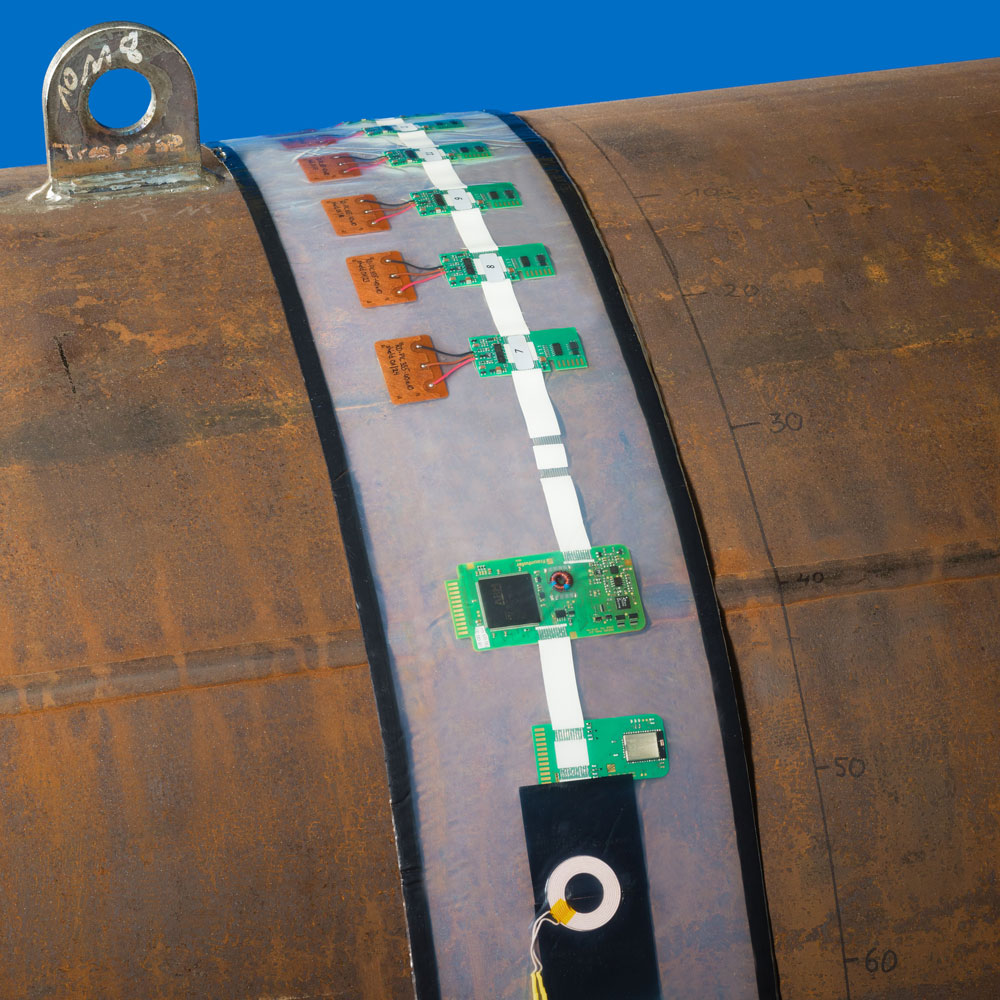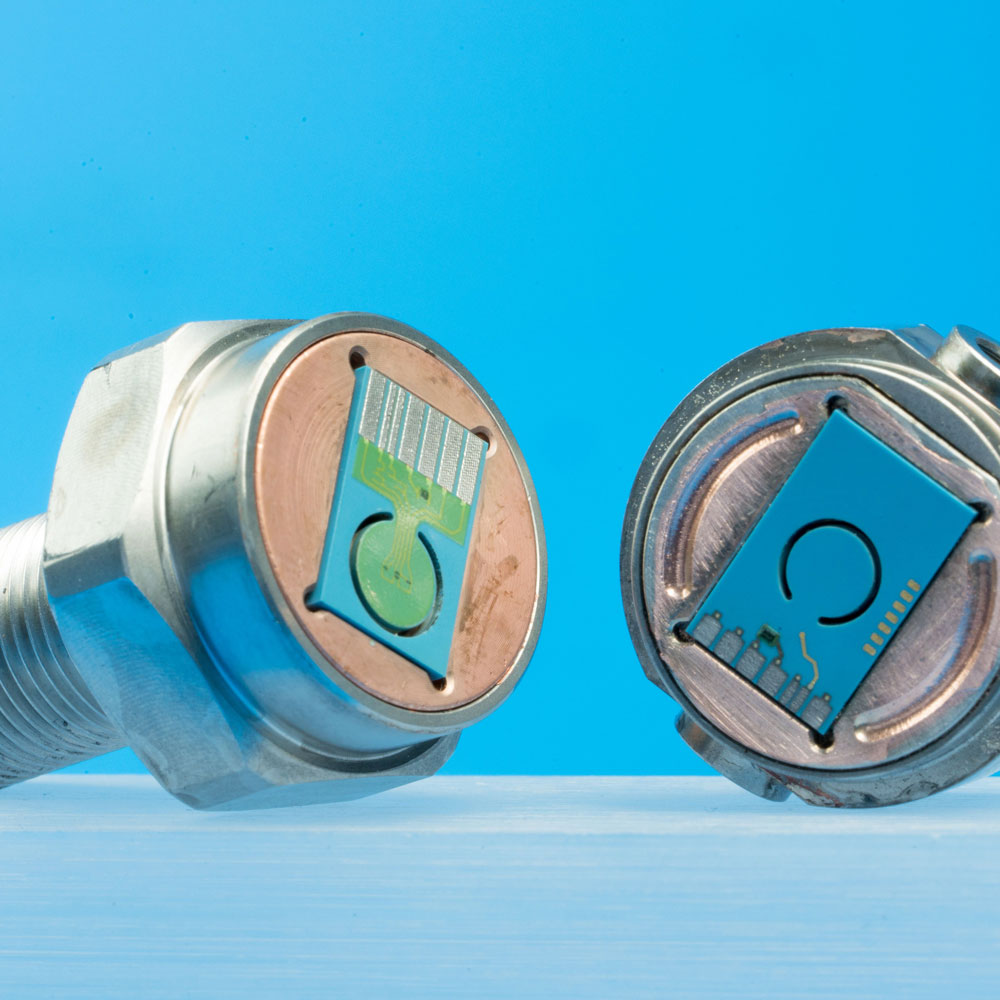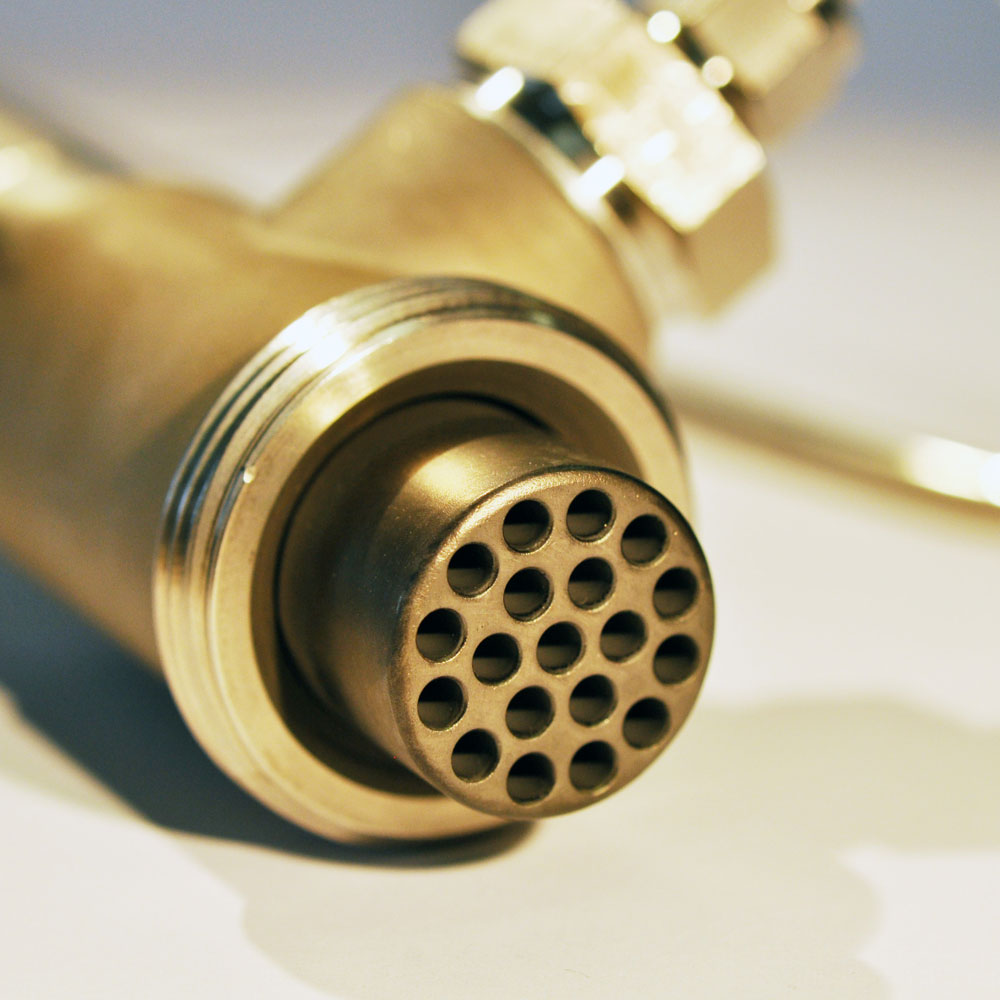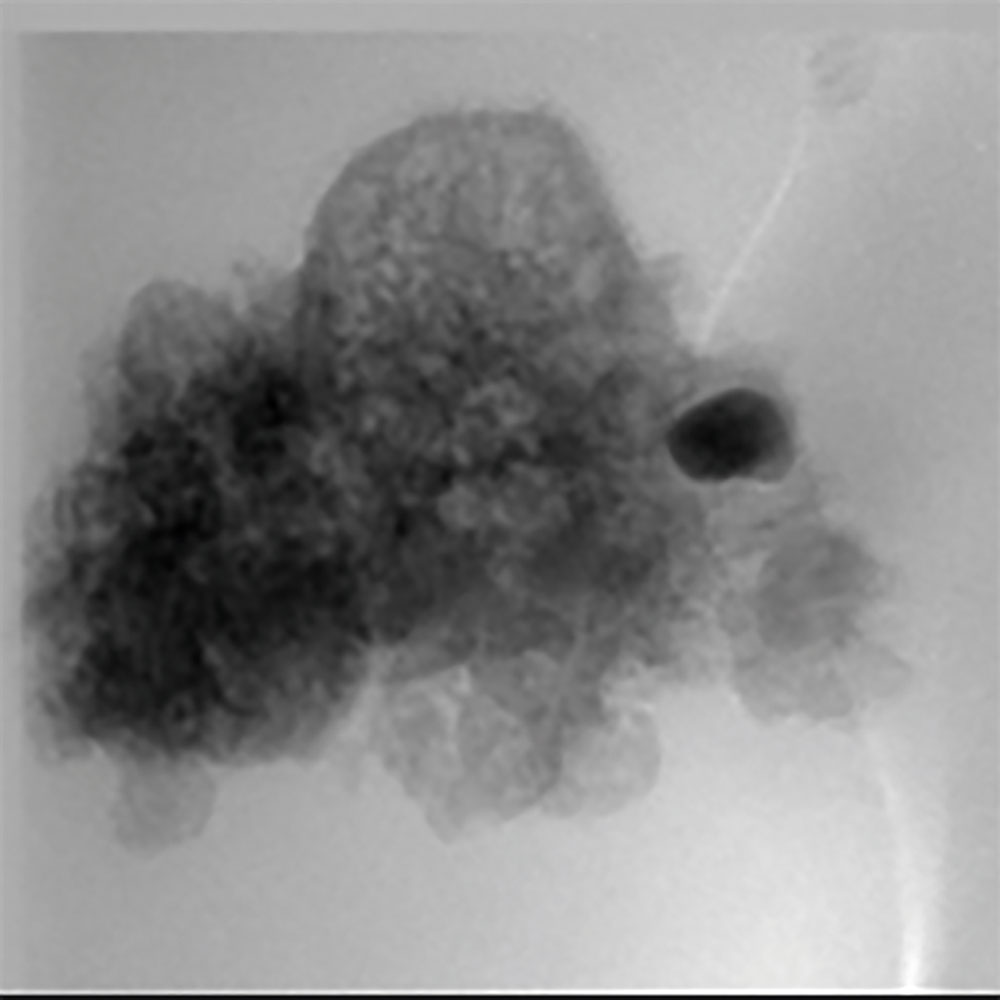
Hydrogen storage and transport

Corrosion monitoring of hydrogen pipelines

In the future, large amounts of hydrogen that cannot be produced on-site will have to be transported to their consumers via pipelines. However, piping material in contact with hydrogen could become brittle and develop fast-growing cracks. To detect such corrosion early on and take appropriate measures, the pipelines will need to be reliably monitored
Monitoring systems based on ultrasonic waves are a suitable solution. Fraunhofer IKTS has developed a concept centered around a sensor ring which is able to continuously detect defects and determine the remaining wall thickness in the case of extensive corrosion on horizontal, vertical, above-ground and underground piping. The sensor ring is permanently installed on the pipe. Installation is easy and usually does not require any modification to the piping system. Furthermore, the monitoring system can always be extended by interlinking a number of sensor rings.
The ring’s integrated piezoceramic sensors transmit guided ultrasonic waves into the pipes. As the ultrasonic waves spread, pipe damage causes scattering and reflections. Combined with integrated signal processing, these effects are used to identify and localize defective areas.
Unnecessary digging, the removal of coating or scaffolding is avoided. Since guided ultrasonic waves travel across wide distances mostly undampened, long pipe sections can be permanently monitored from one single location. Moreover, it is possible to check hard-to-access pipes at regular intervals.
Depending on environmental conditions and requirements, various sensors of different temperature classes or custom-made versions for explosion-proof areas can also be connected. No cables are required for energy supply and to read out sensor data. This completely removes the need for plug connections on the measuring system, increasing operational reliability.
Gas sensors for leak detection
Due to the flammability of hydrogen in air, reliable sensor systems must ensure that hydrogen and methane can be detected reliably. For this purpose, Fraunhofer IKTS develops pressure, flow and temperature sensors based on LTCC technology. Compared with steel, ceramic materials provide high stability against hydrogen embrittlement, especially high sensitivity and reliable operation in hydrogen environments. Furthermore, the LTCC technology used provides very complex structuring options and enables a three-dimensional design for the sensors. This guarantees a high degree of versatility when it comes to the design and geometry of the elements integrated in the sensor, such as chambers, membranes and channels. Thus, gas sensors are easy to miniaturize and adapt to specific application scenarios.
Hydrogen separation from hydrogen-natural gas mixtures
Some parts of the existing natural gas infrastructure, such as natural gas filling stations, are only able to cope with 1 or 2 % by volume of hydrogen concentration. Therefore, it is necessary to separate hydrogen from natural gas before distributing it through the existing natural gas grid. Fraunhofer IKTS is developing separation processes based on carbon membranes, which compared with pressure swing adsorption or cryogenic separation processes constitute a cost-efficient option and are resistant against harsh environmental conditions and natural gas-attendant materials, such as hydrogen sulfide. Carbon membranes are chemically inert and possess a much higher permeability and selectivity than polymer membranes. A single-step membrane process can separate up to 90 % of hydrogen from hydrogen-natural gas mixtures. Further reduction of the share of hydrogen within the natural gas down to less than 2 % is possible with an enlarged membrane surface or in a two-step membrane process.
Analytics for tank, pipeline and storage materials
When selecting materials for hydrogen applications, the effect of hydrogen on material properties needs to be taken into account, whether the hydrogen exists in liquid or gaseous form.
In order to examine the interactions, Fraunhofer IKTS is able to use highly modern 3D nanoanalytics to cover scales from the sub-nanometer to centimeter range. For instance, it is possible to characterize and visualize in nanometer resolution 3D structures of hierarchic materials used in electrocatalytic hydrogen production. Furthermore, we can determine information on the chemical composition, crystallographic properties, bonding states, mechanical properties and boundary surface properties.
Processes such as the hydrogen release in storage materials or the propagation of cracks in pipelines where the materials are undergoing changes can be initiated in-situ and operando in a time-dependent manner and mapped microscopically. It is thus possible to directly observe potential failure mechanisms and optimize hydrogen storage and release processes.


